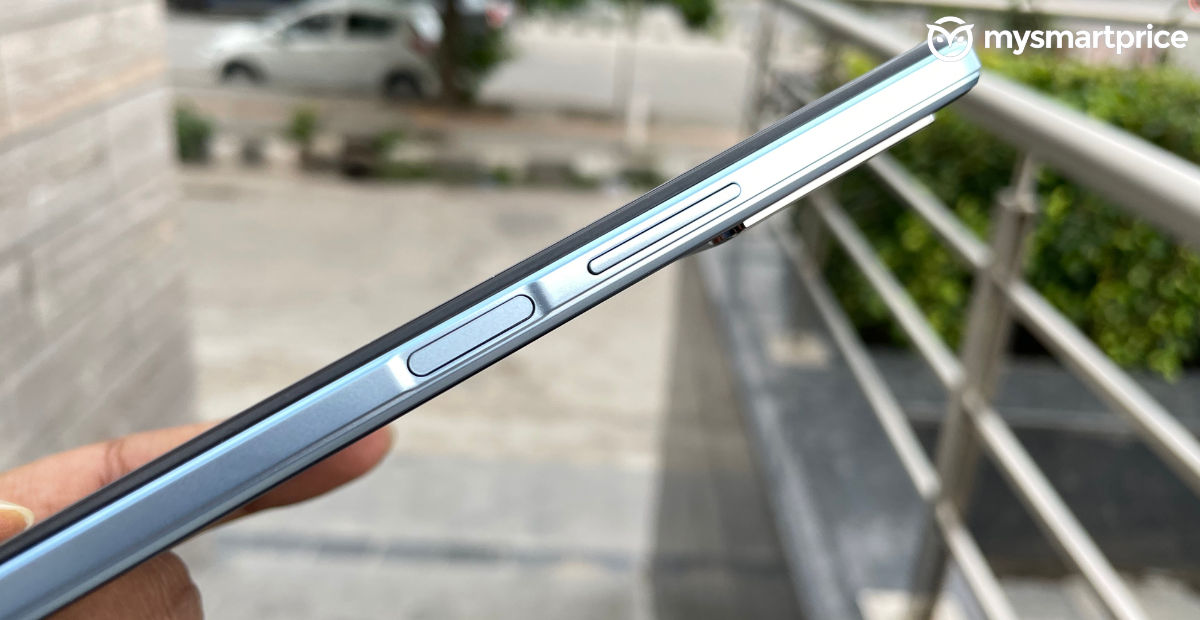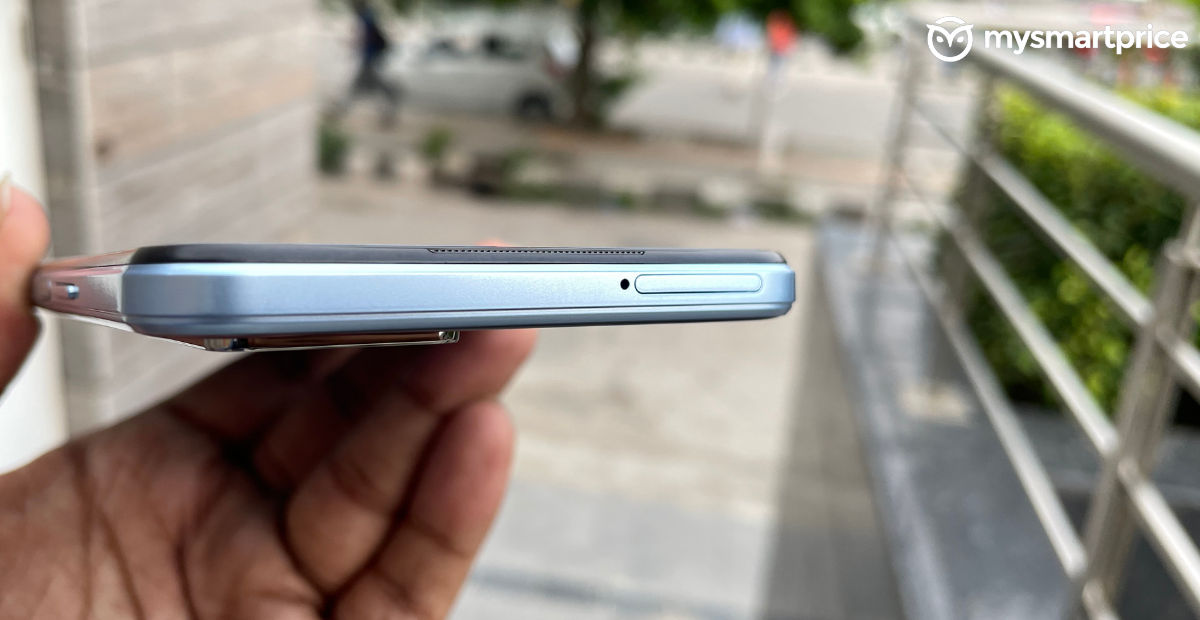
Vivo has been a dominant force in the Indian smartphone market, thanks to the likes of the Y and series T phones. But, now, the company seems to be picking up steam with its series T of phones – starting with the Vivo T1 5G, the Series T has helped Vivo quickly secure the second spot in 5G online smartphone shipments.
This brings us to the Vivo T1x, a 4G smartphone with a Qualcomm Snapdragon 680 SoC, 4-layer cooling system, 50-megapixel dual rear camera setup, 90Hz display, a 5,000mAh battery pack, and much more. It somehow manages to squeeze this at a starting price of Rs 11,999. With that, the question arises – can the Vivo T1x help create other gateways for the company in the smartphone market? We got our hands on the device and used it for a week, and here’s our review.
Vivo T1x Review: Design
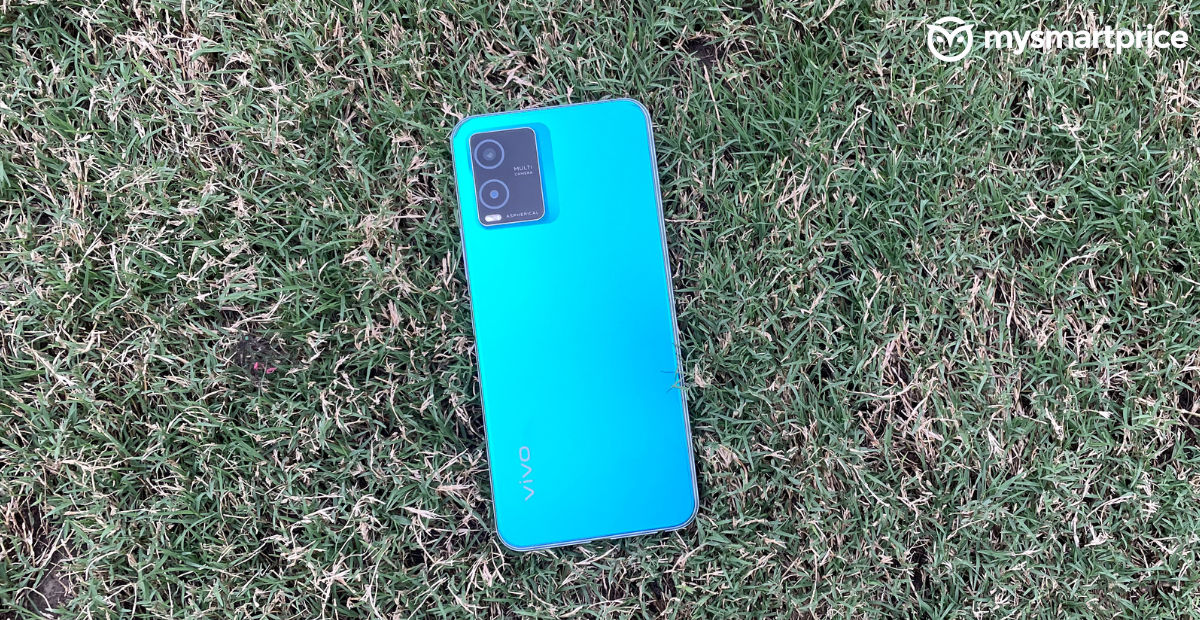
The Vivo T1x is one of the more pleasant-looking devices in its segment. It comes in two colour variants – Black and Blue, out of which we received the latter. It sports a shiny lustre with a plain blue colour, which can appeal to some. Although it’s made of plastic, not glass, it glares light into people’s eyes – so much so that it can be annoying. It has curved edges that make for a nice, secure grip in hand. It’s also sleek and lightweight, at 8mm thickness and 182g weight, so it is comfortable to carry anywhere. The back is prone to fingerprint marks, though, so you may want to use a case with it.
Besides that, it has a vertical camera module on the back with two lenses and a LED flash. It comes with a headphone jack, a speaker grille, and a Type-C port on the bottom. On the top, we get to see a full-sized SIM tray with space for 2 Nano SIMs and a microSD card. The right side is occupied by a volume rocker and a power button that can double up as a fingerprint sensor.
Overall, the design of the Vivo T1x is impressive and is one of its key features.
Vivo T1x Review: Display and audio

The Vivo T1x sports a 6.58-inch IPS LCD display with a Full HD+ resolution of 2408 x 1080. Because it’s an LCD, colours appear warm and not that vibrant. Text and icons appear crisp, though. Unfortunately, it has a screen-to-body ratio of 90.6%, thick bezels, and an outdated water drop notch.
The 90Hz refresh rate makes the scrolling experience smooth. You get the option to choose between 60Hz or 90Hz refresh rate. There’s another option in the settings called Smart Switch, which sets the refresh rate best for an app running on the screen.
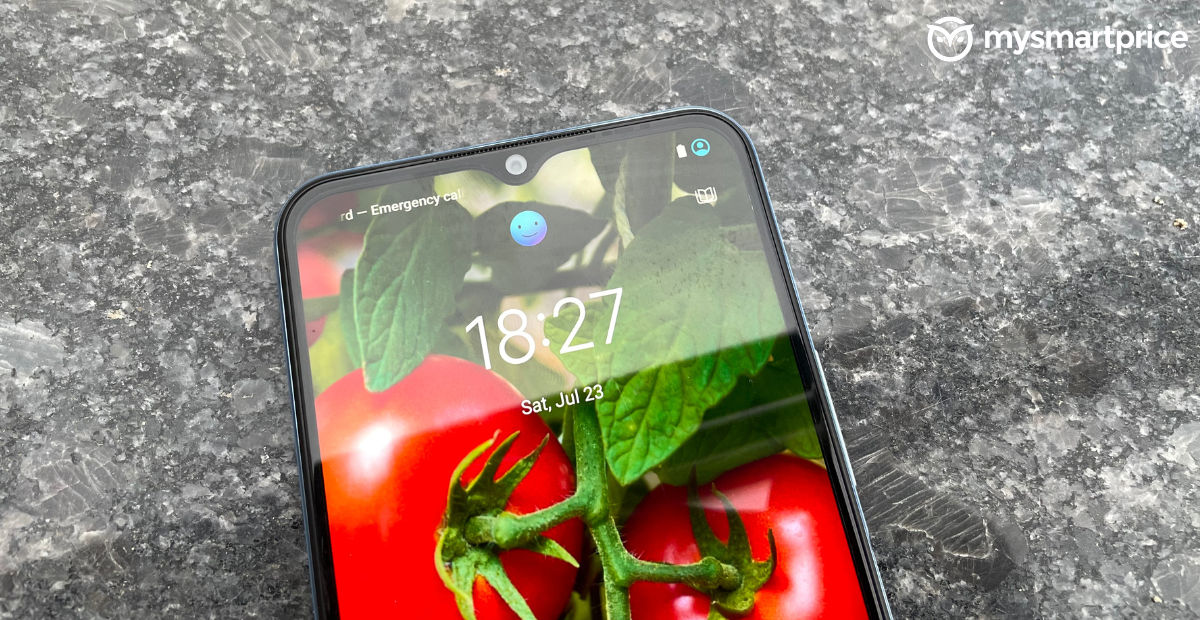
We didn’t notice any jitters while scrolling on the 90Hz refresh rate, but the touch response was slow. Tapping tiny icons was a bit difficult, and there were times when we had to make multiple attempts to interact with the smaller elements on the screen.
Vivo hasn’t mentioned the screen brightness figures of the display, but it was reasonably visible for us under direct sunlight. So we mainly set the display on auto-brightness, and it seemed to function just fine.
The Vivo T1x has a single speaker on the bottom, which is somewhat loud but not crisp or clear. It gets distorted on the maximum volume. To get the best binge-watching experience, we would recommend you use earphones with it.
Vivo T1x Review: Battery life and charging
The Vivo T1x packs a 5,000mAh battery pack inside. You can charge it with the bundled 18W charger, which seems to be a little disappointing given the competition has at least 33W support. It comes with Vivo Energy Guardian tech to protect the battery from overcharging and enhance its longevity.
To test the battery life, we mostly used the phone for scrolling across Instagram and Twitter. Besides that, we also shot YouTube videos, surfed the web on Google Chrome, clicked a few pictures, and played games for approximately 60 minutes in a day. All this when the device’s display was set on adaptive brightness and 90Hz refresh rate. It lasted a day with a total screen time of eight hours and five minutes, which is good.
In terms of charging, the device takes a long two hours to take the device from 1% to 100% battery percentage. For reference, the competition takes a little over an hour on average using 33W chargers.
Vivo T1x Review: Performance and software

The Vivo T1x uses a mid-range Qualcomm Snapdragon 680 processor that is coupled with up to 6GB of LPDDR4x RAM and 128GB of UFS 2.2 inbuilt storage. The inbuilt storage can be expanded by up to 1TB via an external microSD card. Moreover, you get an extra 2GB of RAM via memory expansion technology which eventually uses some portion of the internal memory to use it as RAM.
While even the low-range devices are loading Android 12 out of the box, Vivo has chosen to ship the T1x with Android 11 that runs Funtouch OS 12. Once the device was set up, we got to see a lot of bloatware that sent us a ton of spammy notifications daily. Fortunately, most of them could be uninstalled.

By default, dragging down from the home screen brings the Global Search, which can be annoying, but you can change this to draw down the notification tray in the Home Screen settings.
The Funtouch OS 12 comes loaded with basic features, including Split Screen, Smart Mirroring, Dynamic lock screen, and the Ultra Game mode. The skin has cool widgets we liked, such as the Weather and the Nano music player. It has an animation effect so that you can play around with it.
Returning to the performance, the Vivo T1x was fine for our general usage, which included web scrolling, social media, phone calls, and watching videos. We observed some stuttering while navigating across the UI. We could easily notice the jitters while scrolling Instagram and YouTube. The phone was a little slow to multitask, but to an acceptable limit given its price.
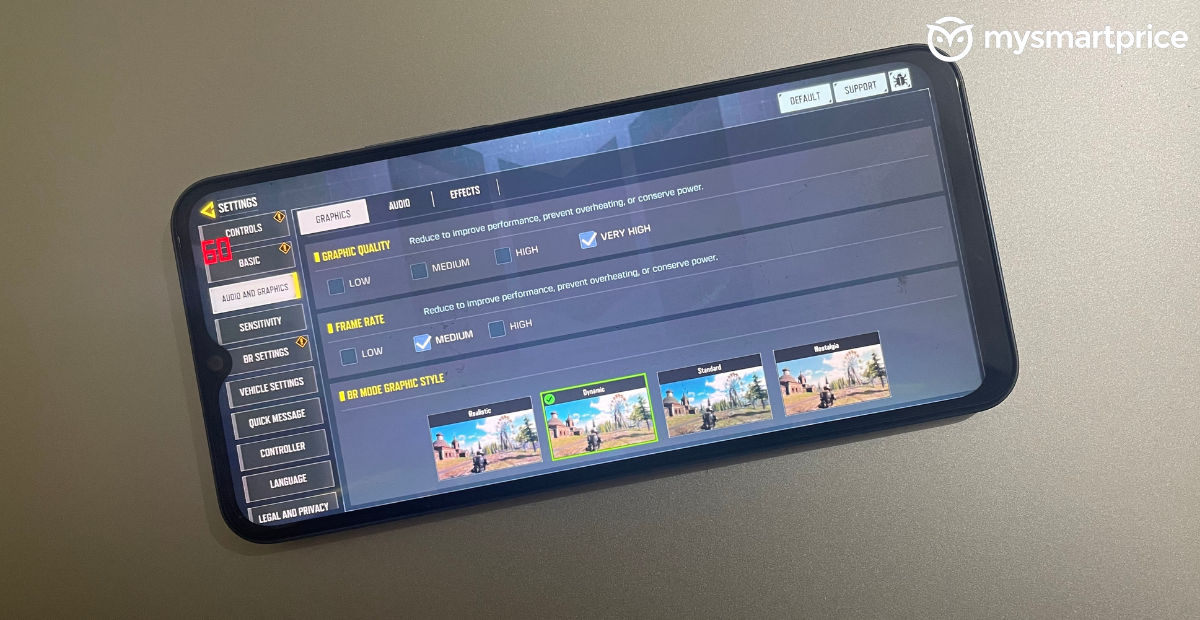
It can tackle gaming as a budget phone does. Casual games run smoothly, but online games can be taxing for the phone, given its processor’s limited capabilities. BGMI defaults to Balanced graphics at a Medium frame rate, but for a better experience, we suggest switching to Smooth graphics at a High frame rate. Call of Duty: Mobile could run at Very High graphics at a Medium frame rate without issues.
Here’s the bit that we found hilarious, though – there’s an Ultra Game Mode which is said to enhance the gaming experience. Ironically, games would crash while loading when the mode was turned on. It comes with a four-layer cooling system to keep heating at bay. It does seem to work, as the rear of the phone didn’t heat up despite playing BGMI for almost an hour.
The biometrics, face unlock, and fingerprint sensors were quick to respond and unlocked the phone swiftly.
Vivo T1x Review: Camera

The rear camera module houses a 50-megapixel primary sensor along with a 2-megapixel depth sensor. On the front, we get to see an 8-megapixel shooter. The camera app comes with basic modes such as portrait, night, photo, a 50MP mode, panorama, live photo, slow-mo, time-lapse, pro and documents. Let’s take a look at the pictures we clicked with the Vivo T1x.
-
- We noticed that the 50MP primary sensor is inconsistent in terms of colours. Different shots in the same scenarios have different colour tones. The camera also has 10x digital zoom. The photos clicked from the primary camera lack detail, and things worsen when you use digital zoom. It clicks pictures with inaccurate colours and blown-out highlights.
- In low-light conditions, the T1x clicked overexposed pictures that appeared washed out. Night mode is a life-saver here and controls those exposed lights very well.
- The depth camera didn’t work as intended, and the portraits didn’t have a bokeh that looked natural.
- Selfies on the Vivo T1x turn out to be good. The areas other than the subject in the background have been detailed well, The colours are well reproduced, but the skin tone has become whitish even when the beauty mode is off. In low light or indoor conditions, the front camera maintains the skin tone well, but the picture looks soft with fewer details.
- Videos on both the rear and the front cameras are capped at a maximum of 1080p at 30fps. The videos appear to have noise in any lighting condition, and the mic captures a lot of background noise.
Vivo T1x Review: Verdict
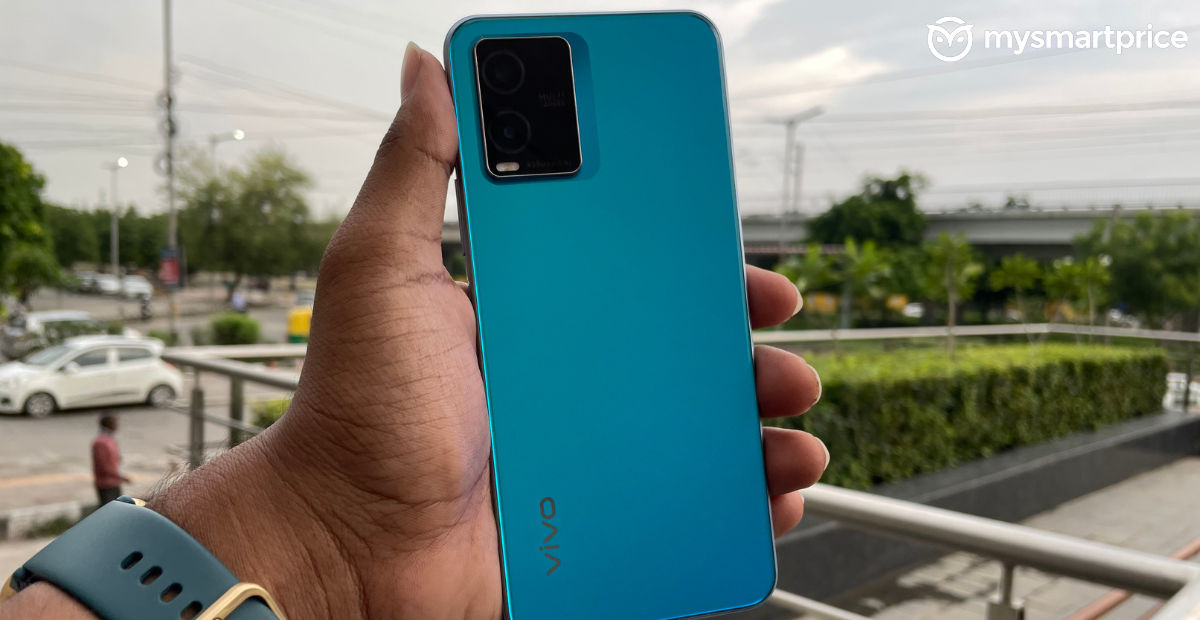
Vivo’s Y-series smartphones dominated the sub-Rs. 15,000 segment with low-end specs. Now that the Vivo T1x is here, it cannot be denied that the company has packed the smartphone with fair specs at this price range. The phone does have a good-looking stylish design, a decent battery life, an acceptable display, and okayish performance. But the cons, such as a lack of a good camera setup, bloatware-filled UI, and slow charging, cannot be ignored either. A gaming enthusiast might need to skip this and look for alternatives.
Talking about alternatives, the newly launched Samsung Galaxy M13 4G gets a beefy 6000mAh battery which will last longer than the Vivo T1x. Or, if you are missing an AMOLED display, then the Infinix Note 11 could be looked upon. But, if your priority is not gaming, and if you’re looking for a decent phone under Rs 12,000, then the Vivo T1x might be the right choice for you.


